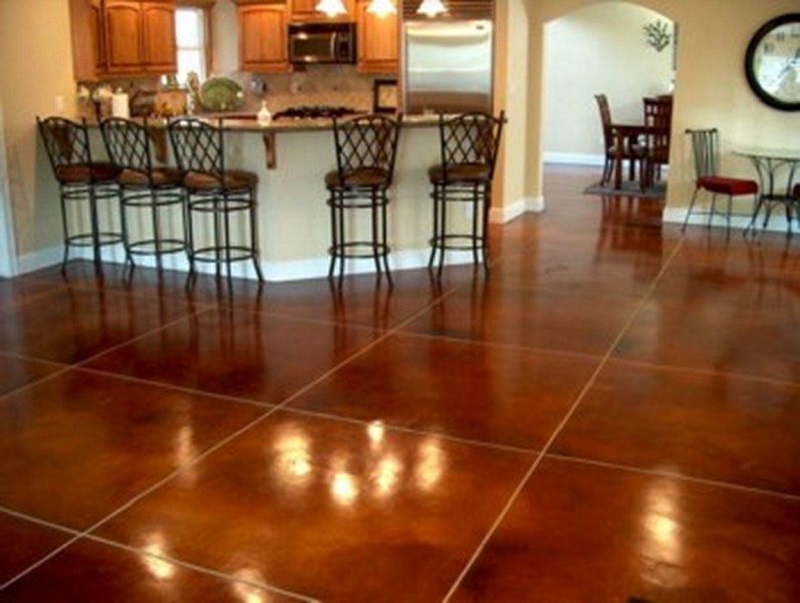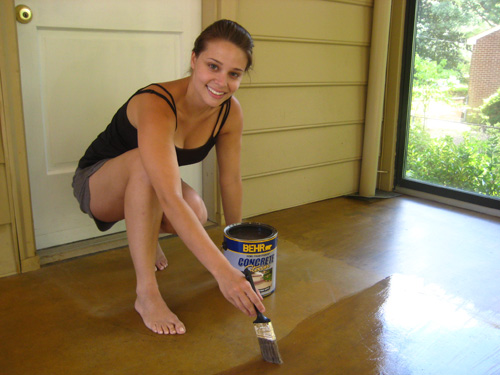Explore Local Stained Concrete Options for Residences and Shops in Your Area
Explore Local Stained Concrete Options for Residences and Shops in Your Area
Blog Article
Why Regional Discolored Floor Covering Is the Perfect Option for Sustainable Home Improvement
In the realm of sustainable home improvement, local tarnished flooring has actually become a preferred option amongst ecologically mindful home owners. The special mix of aesthetic charm, toughness, and ecological benefits it uses can not be neglected. By using locally sourced timber, it promotes a positive ecological influence, and the discoloration process enhances durability while lessening unsafe chemical use. As a cost-efficient financial investment with decreased maintenance demands, it raises a provocative question: could this be the optimal service for lasting real estate?
Understanding the Concept of Local Discolored Floor Covering
While the concept may appear unique to some, local stained flooring is a cutting-edge method to home renovation that integrates aesthetics, sturdiness, and sustainability. The discoloration process not only enhances the all-natural appeal of the wood grain yet also adds a layer of security, increasing the durability of the flooring. Making use of neighborhood wood types commonly sustains regional economies and advertises responsible woodland management techniques.
The Appearance of Regional Tainted Flooring
Why is neighborhood stained floor covering acquiring popularity for its aesthetics? Local tarnished floor covering uses a diverse range of shades and patterns, showing the all-natural charm and variations of the regional wood varieties utilized. Inevitably, the appeal of neighborhood tarnished floor covering lies in its ability to change homes right into distinct, aesthetically appealing rooms while advertising sustainability.
Ecological Impacts of Neighborhood Discolored Flooring
The ecological ramifications of regional stained flooring include two significant aspects: reducing carbon footprint and waste reduction advantages. Using locally sourced products for staining not only diminishes transportation exhausts, but additionally advertises sustainable forestry methods. The waste reduction element comes into play as these floor covering types usually have a longer lifespan, decreasing the frequent need for substitutes and the waste associated with it.
Decreasing Carbon Footprint
As home owners transform to even more lasting options, neighborhood stained floor covering emerges as a viable remedy to lower carbon footprint. The procedure of staining the flooring, instead than making use of synthetic coverings, involves fewer chemicals and much less energy-intensive treatments. Deciding for neighborhood discolored flooring shows an efficient measure in promoting environmental sustainability, highlighting a tangible means house owners can contribute to combating environment modification from the comfort of their own homes. Stained Concrete.
Waste Reduction Benefits
Although typically neglected, waste reduction is one more considerable benefit of regional stained floor covering. In addition, the discoloration process makes use of fewer sources and creates much less waste contrasted to producing brand-new flooring products. The selection of local tarnished flooring not just enhances homes however additionally underpins a commitment to sustainable living and waste decrease.
The Toughness and Upkeep of Local Tainted Floor Covering

The Cost-Effectiveness of Neighborhood Stained Flooring
While neighborhood stained floor covering might originally seem much more costly than other options such as carpet or laminate, its durability and resilience promptly turn it right into a cost-effective selection. The upfront cost is frequently countered by the decrease in maintenance costs over time. Unlike rugs that need regular deep cleaning or laminate that might call for substitute after a few years, stained floorings are developed to last, reducing the requirement for costly repair work or substitute. Local sourcing of products reduces transport expenses, contributing to both monetary cost savings and a reduced carbon footprint. For house owners looking for a lasting, economical option for their floor covering requires, neighborhood tarnished floor covering becomes a premium, long-term financial investment that pays off over time.

Real Life Instances of Sustainable Houses With Neighborhood Tarnished Floor Covering
In the world of lasting home enhancement, local discolored floor covering has become a prominent alternative. To even more illustrate its benefits, numerous reality examples of environmentally friendly homes that have actually effectively incorporated this floor covering method will be highlighted. These instance researches offer concrete evidence of the benefits and influence of making use of local tarnished flooring in lasting homes.

Display: Eco-Friendly Flooring Residences
Scanning the globe, one can locate numerous homes that embody the concept of environmentally friendly living via the usage of regional discolored flooring. Across seas in copyright, a modern-day abode showcases its rich, maple-stained floor covering, a testament to the abundant regional Home Page timber supply (Stained Concrete). These homes not just showcase the visual adaptability of regional tarnished floor covering yet additionally its contribution to a more lasting try this web-site lifestyle.
Local Stained Flooring Benefits
The undeniable appeal of local discolored floor covering expands past its aesthetic appeal, as it additionally provides substantial benefits to both homeowners and the setting. This kind of flooring is sourced and created in your area, minimizing transportation emissions and boosting the neighborhood economic situation. The staining process makes use of natural, non-toxic products, advertising indoor air quality and lowering the home's ecological impact. In a lasting home in Rose city, Oregon, for instance, neighborhood stained concrete floorings not just enhance the visual appeals however additionally act as thermal mass, soaking up heat throughout the day and launching it in the evening, lowering power use. One more example is a green-certified home in Austin, Texas, where locally sourced walnut was stained and made use of for floor covering, contributing to the home's LEED certification.
Final thought
To conclude, neighborhood stained flooring is a sustainable and feasible option for home improvement. This option sustains neighborhood economic climates, minimizes ecological effect, and improves home visual appeals. Its resilience guarantees longevity, reducing maintenance expenses in the long run. With its one-of-a-kind blend of environmental, affordable and aesthetic advantages, local tarnished floor covering is a clear choice for home owners looking for a lasting, visually attractive and cost-efficient home improvement option.
In the realm of lasting home improvement, regional tarnished flooring has emerged as a preferred choice among eco aware homeowners. Local discolored floor covering uses a diverse range of patterns and shades, reflecting the natural elegance and variants of the neighborhood timber species used. The choice of regional stained floor covering not just beautifies homes yet additionally underpins a dedication to sustainable living and waste decrease.
For house owners seeking a lasting, economical option for their floor covering needs, neighborhood tarnished floor covering arises as a superior, long-term investment that pays off over time. Commercial Stained Concrete Floors.
With its unique mix of ecological, cost-effective and visual benefits, neighborhood discolored floor covering is a clear selection for house owners looking for a sustainable, affordable and aesthetically appealing home improvement service.
Report this page